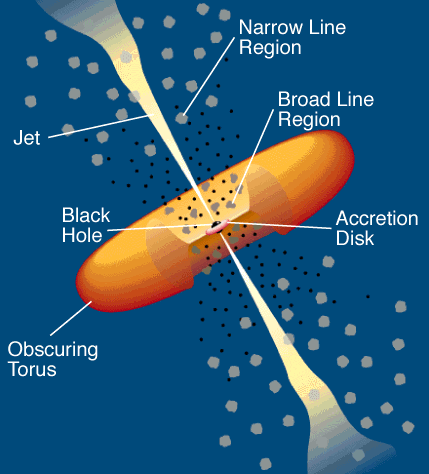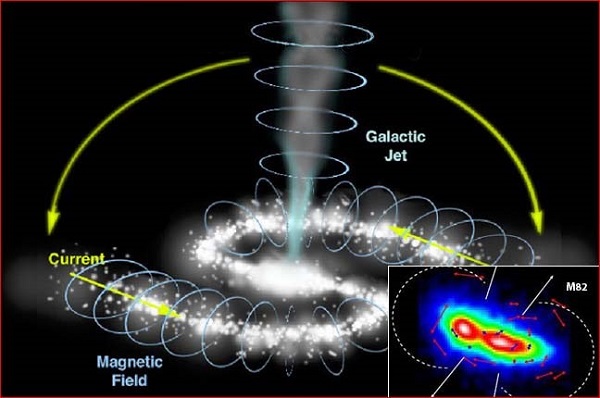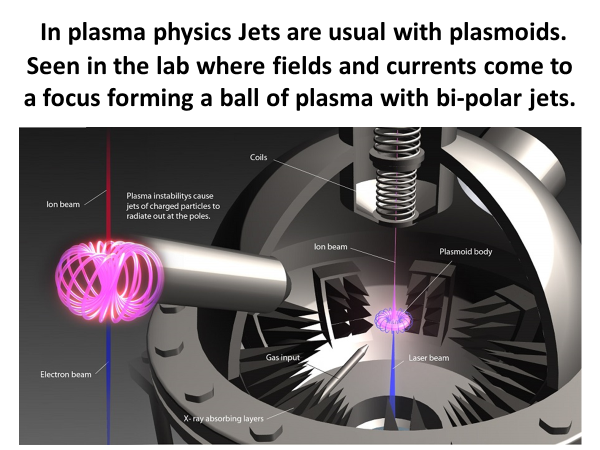Black Hole Image ExplanationThe published result and how it was achieved The published result and how it was achieved.On 10th April, 2019 a coordinated announcement was made by a team of astronomers around the world that the first image of the ‘shadow of a black hole’ had been acquired by the Event Horizon Telescope (EHT). This ‘black hole’ was in the center of the giant elliptical galaxy M87 in the Virgo cluster of galaxies, some 55 million light years away. Until now, all pictures of black holes had been either computer simulations or artists conceptions. This makes the image (Figure 1 here) unique in astronomical history.
The Event Horizon Telescope (EHT) is a collaboration of 13 scientific institutions and 8 different radio-telescopes in Hawaii, Arizona, Chile, Mexico, Spain and the South pole led by Dr. Sheperd S. Doeleman of the Harvard-Smithsonian Center for Astrophysics. These 8 radio telescopes all had to be tuned to operate at the same millimeter wavelength, as that wavelength penetrates the haze of dust and gas at galaxy centers. This dust and gas made it impossible to view the object at shorter wavelengths, which would have produced a sharper image. In order to overcome this limitation, the 8 telescopes were hooked up to work in unison by using atomic clocks. Together, they acted as silvered spots on a global-sized mirror, so effectively the resulting radio-telescope was as wide as the earth to give the best possible image. The observations were done on 5 nights in April of 2017 when there was no cloud cover over any of the facilities, as cloud blocks the radio signal in the millimeter range. Once the observations were complete, the data had to be analyzed and manipulated by computer techniques to form a picture. That part of the process took 2 years of research time. There were a number of ‘blank spots’ in the resulting image which had to be ‘filled in’ using appropriate processing by the EHT collaboration. Figure 1 is the result of that effort. A more complete report can be found at the Science news site. Why it is thought to be a black hole Since we have been informed that we have a ‘black hole’ at the center of our own Milky Way galaxy, it might be wondered why a huge galaxy 55 million light years away was chosen. As it turns out, the EHT collaboration looked at the center of our own galaxy during their observing sessions. But our galaxy only has a small black hole, estimated as containing several million solar masses, and a small diameter, whereas M87 has a monster black hole estimated at 6.5 billion times the mass of our sun and of greater diameter. It was easier to get results from M87 than from our own galaxy. In any case, M87 was a good choice because it is an unusually large galaxy. It is described as a giant elliptical galaxy and appears in large telescopes as shown in Figure 2.
The smaller fuzzy objects near it in the image are other more normal galaxies. This gives an impression of the size of this monster. Even from some of the earliest observations of M87 in the 1950’s, it had been discovered that a huge, confined jet of plasma was erupting out of its center. A photograph is in Figure 3. The orientation of the galaxy M87 there is about the same as in Figure 2, and the bright point from which the jet originates is the core of M87. Then, as time went on, astronomers noticed that other distant galaxies also had confined or focused plasma jets coming from their cores, like the X-ray image of PKS 1127-145 in Figure 4, a galaxy some 10 billion light years away. As these investigations went on from the 1960’s to the 1990’s, it became apparent that nearly every galaxy originally had a super-active core with accompanying jets. These central objects came to be called by the generic name Quasars or active galactic nuclei. It was found that the light from quasars outshone the light from all the rest of the galaxy put together. When the light from a distant quasar was blocked out, the light from the surrounding stars making up the host galaxy emerged. This showed that these objects really were full galaxies at great distances.
Figure 3: The confined plasma jet erupting from the core (bright point of light) of M87.
Later, we were able to image the gas and dust disk that surrounded the central object, just as in the core of galaxy NGC 4261 with its jets. That is shown in Figure 5.
These observations of galaxy centers gave us more information, as the rate of spin of disks around the central object could be determined by Doppler shifts. Those spin rates turned out to be extremely high. If they were gravitationally produced by the disk orbiting around a central body, that body had to be enormously massive In addition, the further out in space we observed, the more brilliant the quasars and their jets became. As a result, there was an energy problem. Where did the energy for that brilliance come from? For more energy to be generated, we need a mechanism to do this. Astronomers had been thinking only in terms of gravitational physics, and gravity has never been seen to produce that kind of energy. Mathematically, it could be done, but it had never been seen in real life.
The only gravitational solution that could be found was based on Einstein’s equations from 1915 which suggested that a supermassive object might form by collapse. But Einstein did not like the idea of Black Holes, even though Schwarzschild in 1919 provided a mathematical explanation to resolve Einstein’s objection. In 1939, Oppenheimer suggested that black holes could form by stars collapsing to a point, but that was merely a theoretical concept. Now, however, with the advent of the observations of quasars with an unknown power source, black holes were the only suggested gravitational source of the immense energy output that was being observed. Consequently, this answer became the standard astronomical explanation. The typical picture explaining galaxy cores and jets (quasars) is given in Figure 6. One major problem with this is that, despite extensive computer modelling, it is extremely difficult to get the jets to form from a black-hole system. They are obviously there, but how they occur and why is uncertain in any black-hole modelling. It is assumed magnetic fields play a key role, but how is not clear. Explanations of the "Black Hole" image The three-step enlargement of the central object in M87 in Figure 7 may now be understood. The main image is the general view of M87 with the central region boxed. That region, when enlarged, as done in the box on the right, shows the two jets coming from the central object. The third enlargement at the bottom shows the central object itself, which is the source of the brilliance and the jets. I suspect that, to maintain directions of the jets correctly, that bottom box should be rotated counter-clockwise by 90 degrees. This is suspected because the brightest part of that image is formed by material racing out towards us, as in the right-hand jet.
Figure 7: The 3-step enlargement of the core of M87 to give the image of the central object. Standard gravitational astronomy sees this as an image of a ‘Black Hole’ powering the system at the center of M87 for the historical reasons explained above. They see the dark central area as the “shadow” of the black hole. It is suggested that the black-hole itself is some 2½ times smaller based on Einsteinian mathematics modified by Schwarzschild and Oppenheimer. The image is certainly an achievement, even if some lingering doubts do exist because of the ‘blank spots’ that had to be ‘filled in’ by the EHT collaboration processors. Yet, given the validity of this radio image, it is realistic to ask if we know what we are actually seeing, and if there is an alternate solution to the energy problem. When the nature of quasars was first discerned by Maarten Schmidt in 1963, the answer to that question was no. The earliest that any work on plasma physics was accepted was four years later in 1967. Even though Hannes Alfven received the Nobel Prize in 1970 for his mathematical approximation of particle behavior in a very dense plasma, he pointed out that this approximation was not valid for space where plasmas were more tenuous. That was ignored. It was not until around 1990 that plasma physicists using laboratory experiments on plasma filaments were able to reproduce many objects that we see in astronomy. This is outlined in the book “Physics of the Plasma Universe’ by Anthony Peratt of the Los Alamos National Laboratories. Among other reproduceable experiments were the formation of all the various types of galaxies by plasma processes. Each of these galaxies has an associated electric circuit and each electric current has a circling magnetic field. This has been established by detailed observations of galaxies like M82 and M51 The resulting circuit from experiment and verified by observation of actual galaxies is shown in an idealized diagram in Figure 8.
In Figure 8, the galactic electric current comes in along the spiral arm. The magnetic field circling the current acts to restrain the extent of the spiral arm. The currents and magnetic fields come to a climax at the core and exits via the jets. It then circles around and re-enters via the spiral arms. The inset in Figure 8 shows the circuit tracked for the galaxy M82. When electric currents and magnetic fields come to a focus in the laboratory, a plasmoid is formed as shown in Figure 9. The plasmoid is toroidal (basically donut shaped) with polar jets of electrically charged and neutral material being a normal feature of the system as shown in Figure 10. In plasma physics in the Lab, the rate of spin of the plasmoid, the surrounding disk and the action of the polar jets is entirely dependent upon the strength of the electric current. A similar situation is expected to apply at the centers of galaxies. If that is so, then gravitational physics may not enter the picture. This means that the “black-hole” scenario may not be valid, but rather that we are dealing with plasma physics and a plasmoid.
If it is a plasmoid that we are viewing in the image of Figure 1 that has just been released, then the bright area is the toroid of the plasmoid, while the ‘black-hole’ is its dark interior, that is the ‘hole in the donut.’ The bright outer areas are generated by the intense electric and magnetic fields of the plasmoid. Their brilliance and speed of rotation, as well as the energy of the polar jets, depend entirely on current strengths, which are expected to be higher in the early universe. As the universe ages, the currents begin to die down, and so the quasar activity begins to wane, thereby explaining these anomalies. Thus, in the case of our own Milky Way galaxy, the activity of the central object has died right down with only occasional bursts of X-rays and gamma rays. Nevertheless, the remnants of the activity from the jets in our galaxy have been picked up in X-ray and gamma ray data from the Fermi telescope and show up as the two purple lobes in Figure 11.
The final matter to be discussed is the assumed mass of the black hole from the speed of the rotating disk. That disk is outside the image in Figure 1. In plasma physics the speed of rotation is controlled by the strength of the electric current. However, in the case of our Milky Way galaxy and its center, there are a number of stars in a tight orbit around the central object. Their motion suggests a high gravitational field. However, Anthony Peratt addresses that issue in his article “Evolution of a Plasma Universe,” in IEEE Transactions on Plasma Science Vol 14:6 pp.639-778. His second equation in that article shows the combined effects on stars and their orbits of the electric and magnetic fields and charges involved, as well as the effect of gravity. When both these electromagnetic effects and gravity on nearby stars are factored in, the anomaly is resolved. This leads to a key observation. As such stars move in the vicinity of a black-hole, there should be a number of occasions when gravitational lensing of these stars occur. But the center of our galaxy has been under intense investigation since 1992 and no evidence for gravitational lensing has been seen [E.H. Dowdye Jr. Proceedings of the NPA 7:131-136 (2010)]. This suggests our central object may not be a black hole at all, but is a plasmoid instead. In light of all these facts, the conclusion is that the image in Figure 1 may not be that of a black hole, but rather that of the plasmoid and the accompanying jets that drive the M87 system. Barry Setterfield, May 19th, 2019.
|










